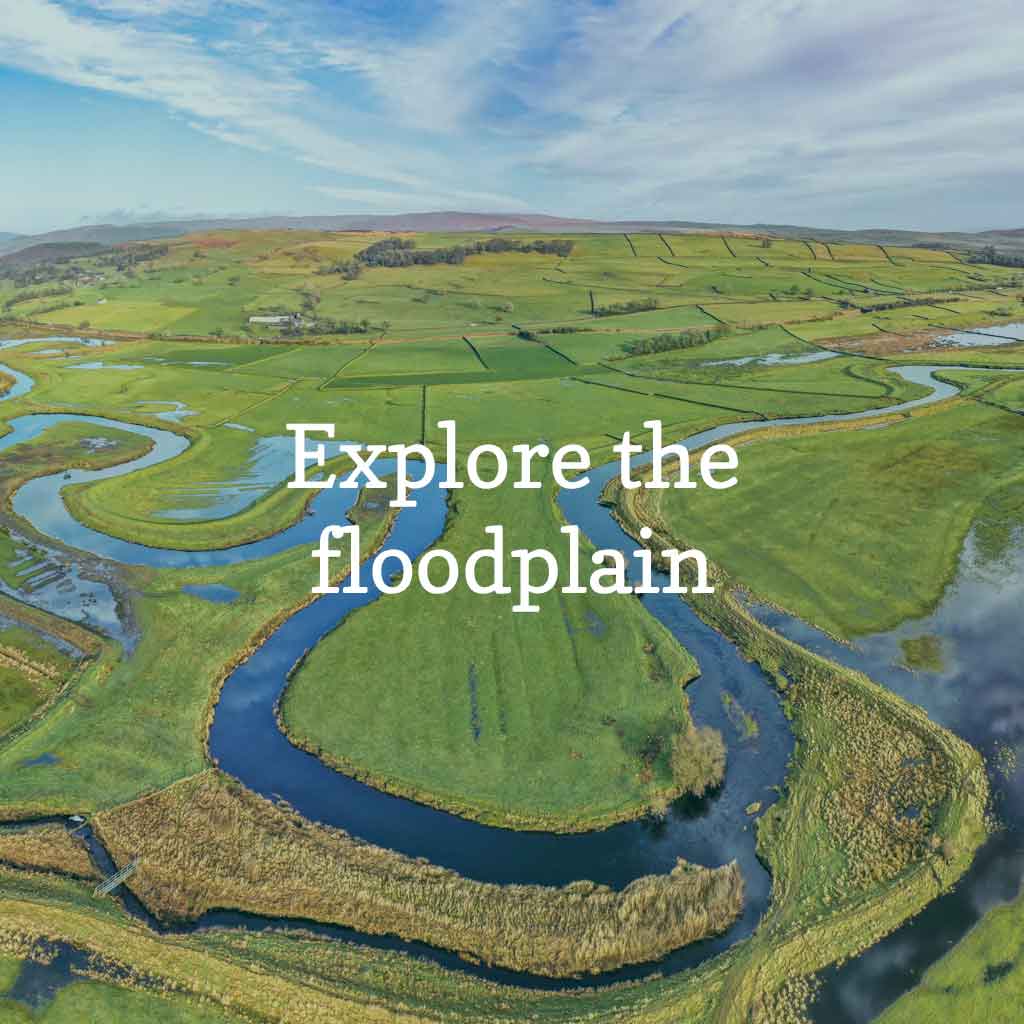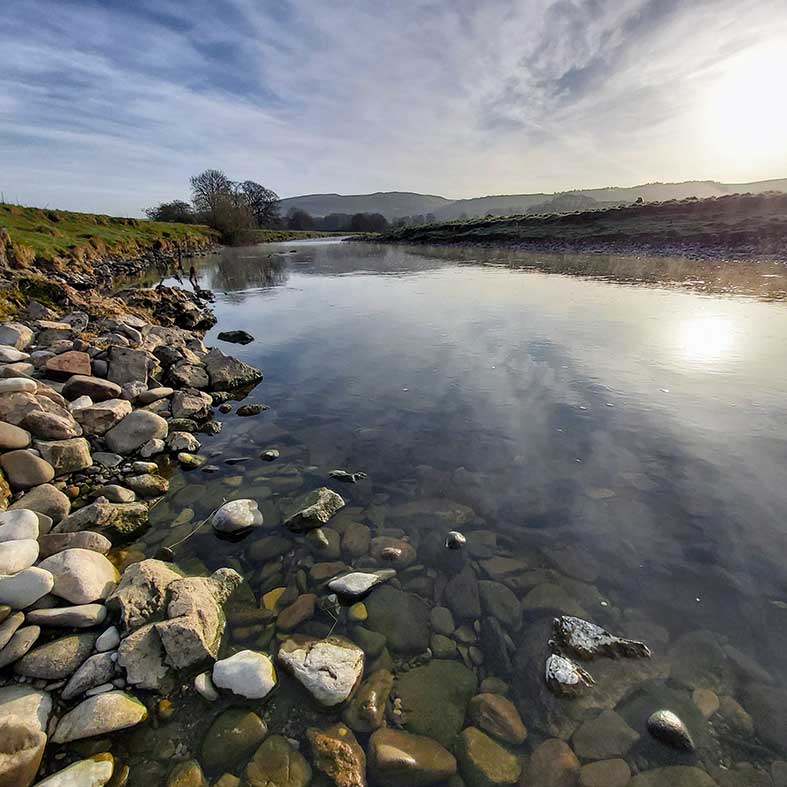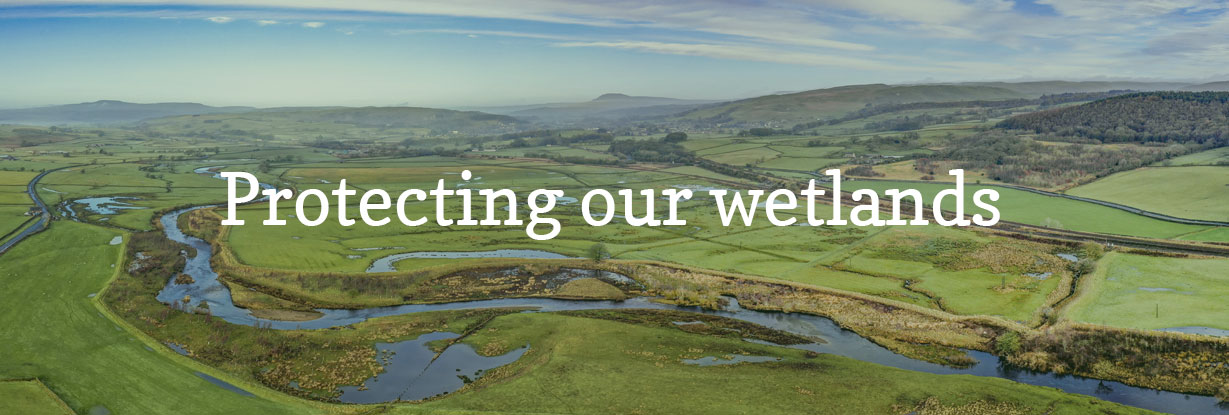
Lying between the Yorkshire Dales and Forest of Bowland, the Long Preston floodplain is a unique wetland area – important for farming, rich in history and a priority habitat for wading birds and rare flora.
Part of the floodplain at Long Preston is a nationally important Site of Special Scientific Interest (SSSI) because the flat valley bottom and river features support unique wetland flora and fauna. With abundant wildlife at any time of year, some of the seasonal highlights on the floodplain include flocks of migrant birds resting awhile on their intrepid journey south, aeronautical acrobatics from displaying lapwings, the drumming of the snipe on a warm spring morning. All sights and sounds which remind us that this wet grassland is a haven for wildlife.
Take a virtual tour of the Long Preston floodplain
Explore the Long Preston floodplain and discover it’s wildlife and history with this unique birds-eye view of the area through the seasons.
Protecting and enhancing the floodplain
The Long Preston Floodplain Project (LPFP) was first started in 2004 to enhance the important wetland habitats of the Ribble floodplain between Long Preston and Settle. The project is a genuine collaboration - with landowners and organisations coming together to create a healthy floodplain that stores carbon and helps mitigate against the effects of a changing climate as well as supporting an abundance of plant and wildlife.
Project highlights
- A formal River Restoration Plan for the Long Preston Deeps SSSI was signed by the Environment Agency and Natural England in 2010. The plan proposes actions to enhance the river's natural processes, improving local habitats for wildlife and helping the landscape adapt to the demands of our changing climate.
- By 2017 190 hectares of farmed land (98% of the project area) was in the process of being restored to thriving wetland habitat, supported by Higher Level Stewardship. This included flood embankment realignment, creation of ponds, scrapes and chutes, planting thousands of trees and other habitat improvements.
- Improved access to and understanding of the floodplain has included: a ‘Long Preston Wetland Trail’ and virtual tour, the construction of a bird hide and bird-watching area, improvements to rights of way and information panels, as well as hundreds of events.
- The Deeper Connections project in 2021-22, funded by the Government’s Green Recovery Challenge Fund, resulted in 16 habitat creation schemes covering 10.5 hectares of land on the floodplain. This included small wildlife habitats, riparian woodlands and hedgerows and the restoration of the aqueduct on Wiggleworth beck.
- The project has amassed over 18 years of bird counts with 212 species recorded – demonstrating how special the area is for breeding, passage and wintering birds.
- The Ribblesdale Farmers Group has grown to 40 members since it was set up in 2017. The Group provides training and one-to-one advice to local farmers in natural flood management, nature recovery and water quality improvements
The future of the Long Preston Floodplain Project
In 2024 we celebrated twenty years of work to re-naturalise the river, restore wetland habitats for wildlife and promote sustainable farming, helping to create a healthy floodplain that can adapt to our changing climate.
Long Preston project partners also agreed an ambitious new strategy with dual aims of providing catchment scale habitat restoration and supporting sustainable farming. A new evidence-driven habitat restoration Master Plan is currently being developed with project partners and landowners to identify opportunities for landscape restoration across the whole of the Upper River Ribble Catchment.
Wetland wildlife
Get a snapshot of some of the species of wildlife that visit the floodplain, including snipe, otter, water rail and kingfisher. Footage taken from our wildlife camera situated on the floodplain.
With abundant wildlife throughout the year, the floodplain is an important habitat for several species of breeding, wintering and migrant birds which are on the UK Birds of Conservation Concern Red List. 47 Red List birds have been recorded including, curlew, lapwing, grey partridge, bewick’s swan, pochard, hen harrier, as well as skylark, greenfinch, tree sparrow and house sparrow. At the peak of the season the area can be home to an impressive gathering of up to 2,500 birds. Find out more about birdlife on the floodplain>
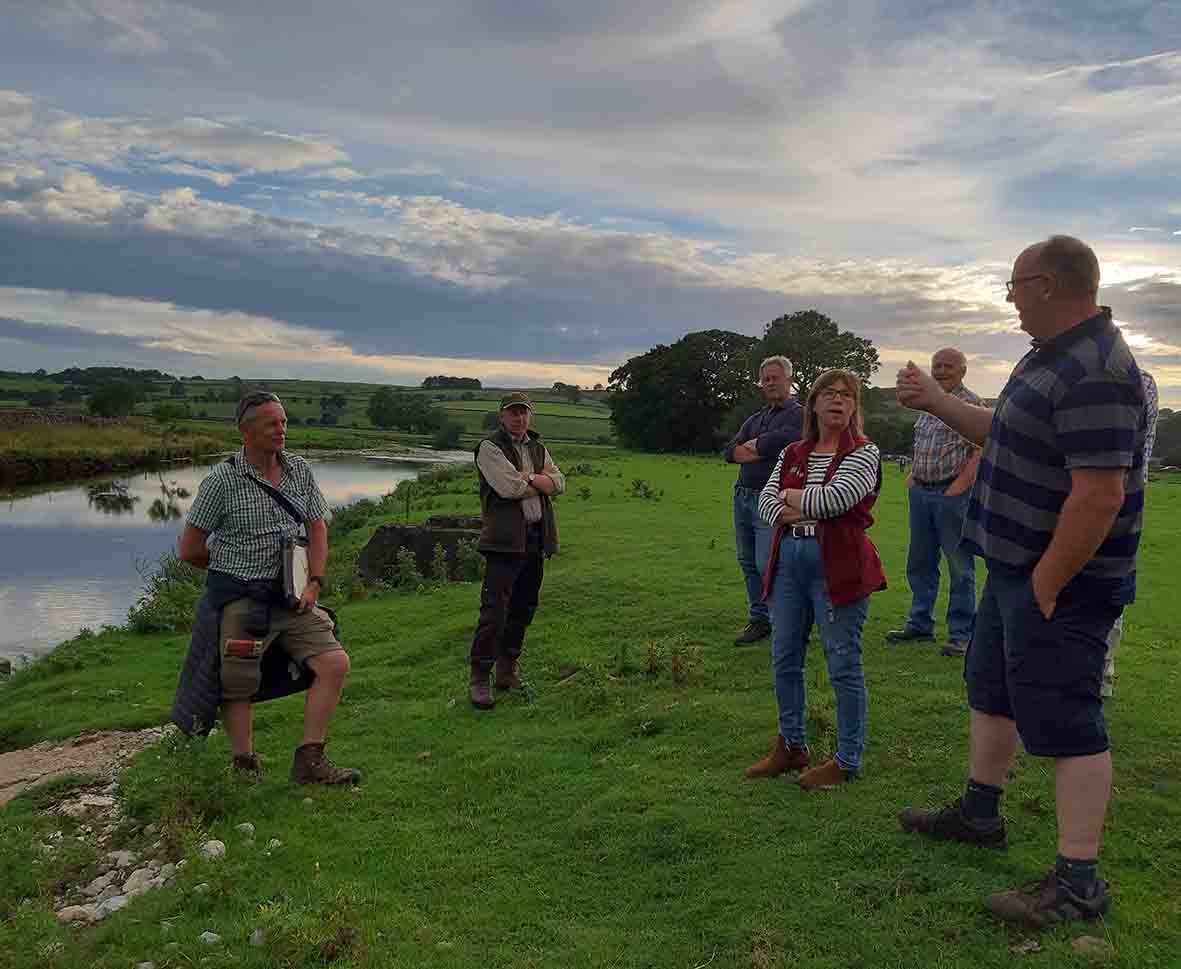
Ribblesdale Farmers
Managing the wetland environment is essential to help create a healthy biodiversity-rich floodplain. We work with farmers to show how effective wetland management can provide financial returns as well as benefitting nature.
In 2017 the Ribblesdale Farmers Group was set up to make the farmed landscape better for wildlife and farming, as well as helping to prevent flooding and improving water quality. The Group enables farmers and other organisations to collaborate to bring about environmental benefits that fit with land management objectives.
The group members meet regularly to share knowledge and experience and work together to improve the sustainability of their farms and to look at natural flood management measures that they can implement on their land.
Find out more about the floodplain
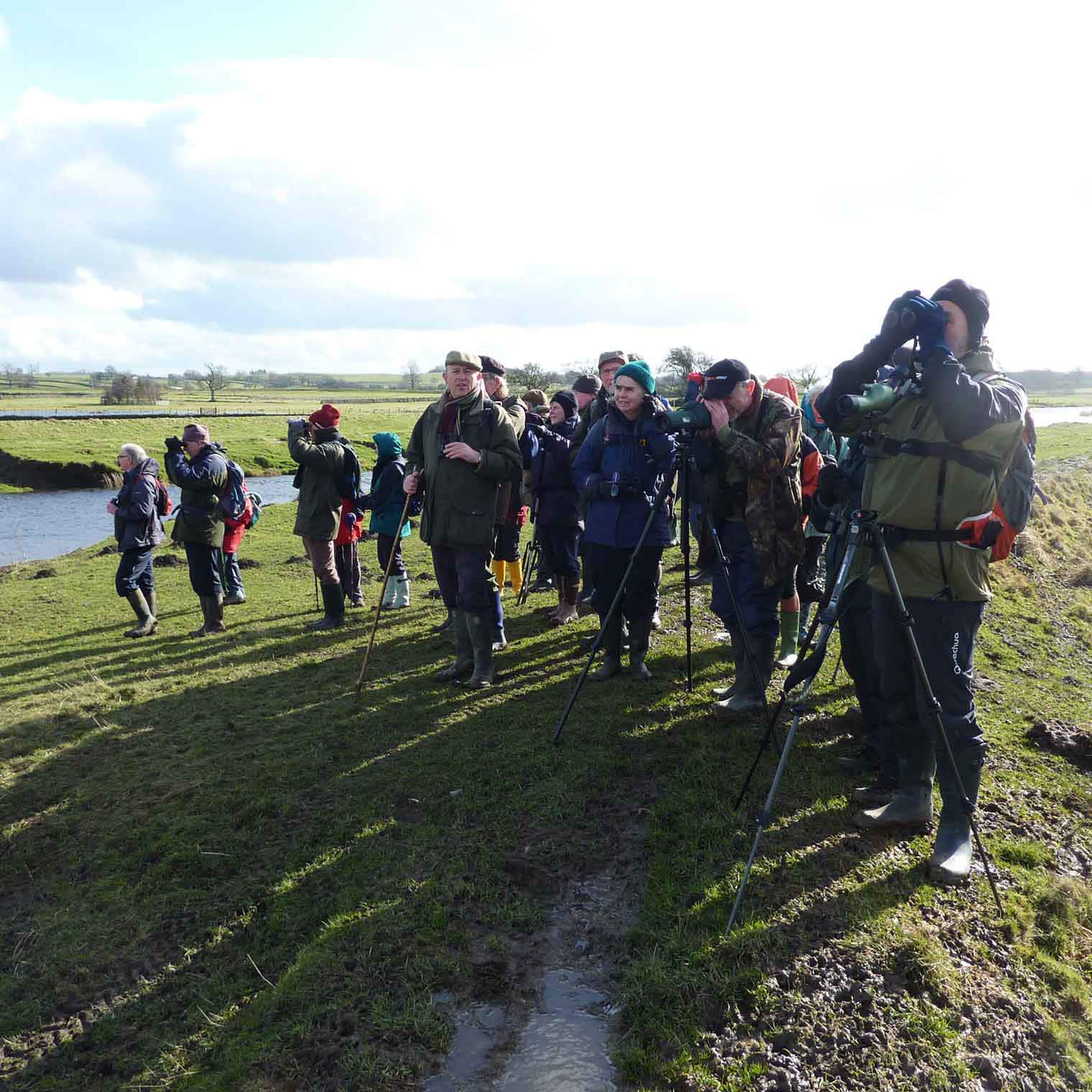
Visit the Long Preston Floodplain
With its beautiful scenery, abundance of wildlife and friendly local community the Long Preston area has lots to offer visitors, whether it’s a day out or you are planning a longer stay.
Get a birds-eye view of the floodplain
Explore the Long Preston floodplain through the seasons and discover it’s wildlife and history in our virtual tour.
History of the Ribble floodplain landscape
What we see today on the Ribble floodplain is the result of natural processes modified by what people have been doing here for thousands of years.

